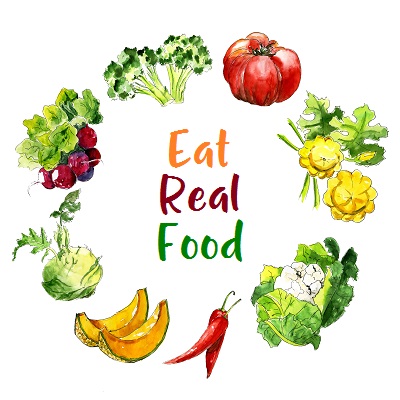 Are you a victim of fake food? You think that you are pretty good at spotting empty calorie or processed foods, but there are a few fake foods possibly hiding in your pantry or fridge. According to Larry Olmstead, the author of Real Food Fake Food, what you are purchasing at the grocery store or in restaurants may not fall under the category of real food.
Are you a victim of fake food? You think that you are pretty good at spotting empty calorie or processed foods, but there are a few fake foods possibly hiding in your pantry or fridge. According to Larry Olmstead, the author of Real Food Fake Food, what you are purchasing at the grocery store or in restaurants may not fall under the category of real food.
What is Real Food?
Real food is the food you buy or eat that is 100% what you think you are getting. Think of real food as that which is available without the effects of additives, preservatives or pesticides. Fruits, vegetables, nuts, and seeds are organic.
Meat and seafood are wild, grass-fed or pasture-raised. Whole grains are 100% whole grains. Beans and legumes are available in cans that are BPA-free. Herbs and spices are organic, fresh or dry or ground with minimal to no processing. It is unaltered and unprocessed. Sweeteners are unrefined.
Proper real food choices help to replenish the body, providing it with necessary nutrients. These foods contain a plethora of vitamins and minerals and help to restore our energy and health.
What is Fake Food?
Your pantry or fridge probably has a few fake foods lurking behind those closed doors. You may not even know that it is in your possession. According to Business Insider, food fraud is a 50-billion-dollar annual industry.
You are not alone in making wrong assumptions about what it is your place in your grocery cart each week. Many of us think we are consciously purchasing real food, but companies are slipping in some unwanted substitutions.
There are a few fake foods that may be filling your plates and cups under pretenses including pseudo meat products, parmesan cheese, teas, honey, and even seafood.
It’s Time to Get Real
If you are ready to ditch the bad and replace it with the good, there are few steps you can take to move your closer to clean eating or the consumption of real food. Clean eating is all about removing those fake foods from your plate and replacing them with whole foods like fruits, vegetables, healthy fats, and protein.
Keep a Food Diary
A food diary is an excellent way to start tracking what you are putting in your body. Once you begin to document what it is you are eating, you can begin to identify which foods are the real foods and which foods are the unhealthy foods. Over time, you can start to eliminate these fake foods from your diet.
Take an Inventory of Your Pantry
Spend some time reviewing what it is you are currently keeping in your pantry and fridge. There’s no need to start tossing out your food. This exercise will provide you with a bit of insight as it relates to how much work you need to do. Your transition to buying and eating real food should be a gradual change. Over the next several weeks and months, begin to fill your pantry and refrigerator with whole foods.
Read Your Labels
Read the labels of the pre-packaged (box, jars or bags) food you have on hand. It may surprise you to learn what ingredients are lurking in your favorite condiment, sauce, food, or drink.
Plan Ahead and Prep
Plan your meals and prep when possible. In the beginning, eating real food may prove to be a challenge as you try new recipes and different things. Plan your meals for the week. Identify which meals you will prepare on the weekends for the week and which days or meals you will whip something up on the fly.
Use a Grocery List
Several apps can help you create your list to ensure that your trip to the store is all about real food and none of the fake stuff. Eating clean is budget-friendly with a bit of planning. Change it up each week so that you do not grow bored with eating the same old meals.
Are you ready to make the change? Set small goals for yourself to increase your chance of success and tackle your goals in small increments. You will be proud of your achievements.






